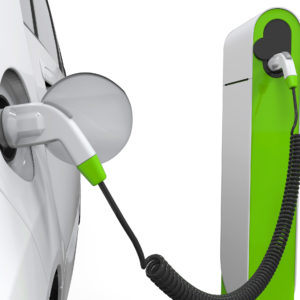Electric cars and online dating have some things in common. Chiefly that you don’t know what you’re getting until you’ve committed. But at least with online dating, it’s just a date — and if you get catfished, you can just get up and leave, or not even sit down. No real harm done.
But the online romance with electric cars (nine-plus out of 10 people have probably never driven one; have only seen representations of them; been told one-sided stories about them) is different. Commitments have already been made — on our behalf. It’s not just a date with an EV. It’s an arranged marriage.
Better get ready for the wedding night.
What to expect? Well, for openers, higher utility bills. For everyone.
Electric cars don’t burn gas, of course. But they do consume energy — electricity — and electricity comes mostly from utility plants, which charge for it. Your electric car’s appetite will manifest at the meter.
How high your power bill goes doesn’t just depend on how much electricity your EV sucks from the socket, either. It depends on where and when.
The average cost of electricity in the United States is currently about 13.2 cents per kilowatt hour (kWh) but residents of several states pay significantly more — including California (19.90 cents), Connecticut (21.62 cents) and Massachusetts (21.11 cents).
Gas prices also vary from state to state, of course. But not by the hour.
Rates per kilowatt-hour increase during so-called peak times, such as the middle of the day, which may be an inconvenient time for you to delay recharging your EV … assuming you’d like to keep moving.
If so, you’ll pay more.
EV proponents avoid mentioning this because it’s another — and higher — expense of EV ownership.
Variable utility rates can also be viewed as convenience pricing — the new (and subtler) form of congestion pricing, which applies special/higher fees to motorists using certain roads during peak traffic hours to discourage people from driving during those times.
The pressure to discourage people from charging EV’s during peak times by charging them more to charge will inevitably increase as the number of EV’s plugging in increases — in order to avoid the lights going out.
It takes 70 kilowatt-hours of electricity to recharge a Tesla 3’s battery pack — the equivalent of running several high-draw appliances at the same time. As the number of EV’s drawing power increases, so will the load on the grid. People in states like California and New York have already experienced calls to turn off or turn down high-draw appliances such as air conditioners during peak-use hours to avoid rolling blackouts.
If EV’s ever become more than a blip on the radar screen — they are currently about 1 percent of all vehicles registered — generating capacity will have to be substantially increased or the load on the grid decreased. The former will cost money in the form of higher utility bills. The latter, in time and convenience. People will either pay a great deal more for power or they’ll be compelled to use their EV’s a great deal less.
That’s what’s coming.
What’s here right now is deceptive advertising. The cost to recharge an EV seems cheap relative to the cost of gassing up because the taxes applied to gasoline aren’t applied to kilowatt-hours. When you fill up, you’re paying about 50 cents per gallon in road-use taxes, which works out to about 25 percent of the cost of filling up.
Thus, the cost of charging up is artificially understated by the same amount.
More, arguably — because EV’s don’t go as far on a charge as most non-electric cars do on a tank. Which means the EV has to be recharged more often than a non-electric car needs to be refueled. While it may cost a Tesla 3 owner only about $9 at current average kilowatt-hour prices (temporarily, sans taxes) he has to recharge about twice as often as a non-electric equivalent gasses up to travel the same distance.
The EV Freebie isn’t going to last forever, either — or even very long. Several states are already looking into ways to recover the tax revenue not being paid by EV drivers.
But the kicker is that everyone will probably end up paying more — including those who don’t own EV’s — because the taxes added to electricity will be applied generally to everyone’s utility bill. These taxes will inevitably be higher than current gas taxes, too, in order to cover the cost of the increased generating capacity needed to power up millions of electric cars and keep the power from going out.
Compare the cost of adding 50 miles of interstate vs. adding one new nuclear reactor or (if you prefer) its wind farm equivalent in generating capacity.
There’s one more line-item not mentioned on the window sticker: The $800-$1,000 or so you’ll spend to have an electrician wire up a “fast” charger at your house. At least you’ll be able to recharge in half an hour or so instead of overnight.
Assuming the power stays on.

